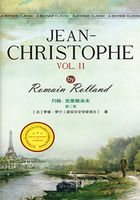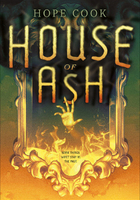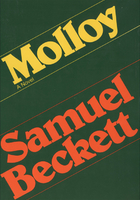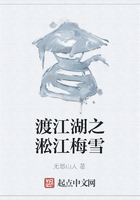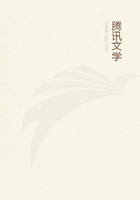By 1957, Beckett had revolutionised the world of theatre with Waiting for Godot and Endgame and had also redrawn the boundaries of prose fiction. But the three post-war novels which came to be known as the Trilogy – Molloy, Malone Dies and The Unnamable – brought him to a textual dead end from which he found it difficult to continue. The final words of that last novel, The Unnamable, 'I can't go on, I'll go on', encapsulate the tensions underlying Beckett's own subsequent literary movements. As he stated in a letter to Mary Hutchinson, 'there seems to be no "going on", for me, from the Innommable [The Unnamable]'.1 In many ways, the prose works that Beckett would write over the next forty years were characterised by his sense that they were 'faux départs' ('false starts'); texts which no sooner begun ended in abandonment, or were discarded after a long struggle to find the path to a satisfactory conclusion. Beckett in these years told a friend that there were two rewarding moments in his creative endeavours, the one where he started a text, and the other where it ended in the waste-paper basket.
The difficulty of writing, and Beckett's own sense of failure, rendered a large part of the corpus from these years ultimately incomplete. Titles such as From an Abandoned Work suggest the quality of drafts, elevated to the status of 'finished' works by ever more insistent publishers and public interest.2 Moreover, the compositional processes of these short prose works are intricately connected and intriguingly self-referential; this is no longer a writer who starts and completes a work, but one who across a wide range of texts realises that there is no possibility of completion. As the surviving manuscripts from this period show, Beckett would start one text, lay it aside to start another, and then return to the original, or amalgamate the two, or abandon both. 'No matter, fail again, fail better', to quote Worstward Ho, appears to have been the guiding principle. We are thus perhaps not to view these prose pieces as separate, individual entities, but as an on-going corpus of writing circling around what From an Abandoned Work calls 'all the variants of the one'. Themes, words, sentences and images resurface again and again across this writing, as well as in the works written for television or theatre.
With the exception of Comment c'est (1961), Beckett's creative landscape in the years after 1950 is littered with ever shorter, ever more pared-down texts, moving towards what the first Fizzle ('He is barehead') calls the 'minima'. One could argue that the Joycean exuberance of the early work of the 1930s and 1940s (aspiring to the master's 'Work in Progress') made way for what Beckett would call his 'work in regress' (note the lower case), the search for a distillation of existential and verbal expression. Moreover, Beckett wrote mostly in French during these years, and then faced the challenge of translating (or rather transmitting) the recalcitrant results into English.
Beckett's failure to find the right way of expressing his failure to express was compounded by the inability of his English language publishers to print his texts with adequate care. As was the case with the journals and newspapers in which many of them first appeared, Beckett's trade publishers in England (John Calder) and America (Grove Press) often failed to meet the challenge of presenting these exacting works. Part of the problem lay precisely in the fact that there were two English language publishers; as Beckett told the English scholar John Fletcher: 'There are often variants between English & American editions because different proofs corrected at different times.'3 A survey of the different publications reveals that Beckett's short prose has frequently appeared in erroneous forms. This is especially regrettable in the case of these particular works, in which the precision of language – from repetition to punctuation and typographical presentation – is so crucially important.
The present edition takes an eclectic approach to these texts, in so far as all available material evidence – Beckett's manuscripts, typescripts, correspondence with publishers, as well as page and galley proofs – has been taken into account. The most reliable texts thus far of Beckett's post-war prose are contained in S. E. Gontarski's edition of The Complete Short Prose, 1929–1989, published by Grove Press in 1995 (hereafter cited as 'Grove 1995'), which has been followed as a base text against which to check the above evidence, being more reliable than Calder's Collected Shorter Prose, 1945–1980 (hereafter cited as 'Calder 1984'), which is riddled with errors despite the fact that Beckett read proof.
In terms of the ordering of contents, the decision was made to present these prose pieces (as far as possible) by order of composition, while at the same time upholding the 'groupings' seen into print by Beckett.4 This allows the reader to follow Beckett's developing aesthetic and the dialogue established between texts. The only difficulty with this procedure concerns Fizzles (or Foirades in French), consisting of eight distinct short prose texts. As John Pilling has argued, Beckett most probably wrote the first five (in French) as early as 1954. He then proceeded to write 'Se Voir' ('Closed place') in 1968, began writing 'Pour finir encore/For to End Yet Again' in French in 1969 and wrote 'Still' in English in 1972. These texts, written across a span of nearly twenty years, were then brought together in French (as Pour finir encore et autres foirades by Les éditions de Minuit) and in English (as For to End Yet Again and Other Fizzles by Calder, and as Fizzles by Grove Press) in 1976, each edition arranging the texts in a different order. By upholding the integrity of this group, their individual interaction with other pieces written in the interim is slightly obscured. (Thus, for example, 'Se Voir/Closed place', written in 1968, essentially reworks Le Dépeupleur/The Lost Ones, which Beckett began in 1966 but then abandoned, and only completed – with an additional final paragraph – in 1970.)
Furthermore, we need to remember that all of the so-called Fizzles were published individually in a magazine, before being collected in volume form. The same can be said of many of the works in the present edition. First published as individual slim volumes or in periodicals, they were only later 'collected' in larger gatherings. As his correspondence with publishers makes clear, Beckett acceded to the request for (in John Calder's words) 'acceptably sized volume[s]' by handing over whatever was still unpublished, and allowing texts previously published in limited editions or magazines to be reprinted.5 This is the background to volumes such as No's Knife: Collected Shorter Prose, 1945–1966 (Calder & Boyars, 1967) and Six Residua (Calder, 1978). At the same time, there is no doubt that Beckett viewed the texts gathered under the title Fizzles as belonging together, and the present edition upholds this coherence. I have chosen to place Fizzles according to the composition date of the latest text, though the reader should be mindful that they were written across a period of nearly twenty years.
Texts for Nothing
Beckett started writing the thirteen Texts for Nothing in French on Christmas Eve 1950, and finished them a year later in late December 1951.6 He had a clear sense of what he was trying to achieve – as with the three novels of the Trilogy, the manuscripts of the Textes pour rien show remarkably little revision.7 However, the English translation proved a rather more arduous affair, and dragged on, or rather off and on, for nearly fifteen years. He began translating immediately after finishing the French versions, in December 1951, but abandoned the task a year later. He resumed working on them in 1958 and again in 1963, but only completed the translations of all thirteen texts in December 1966. They first appeared together in English in No's Knife: Collected Shorter Prose, 1945–1966 (Calder and Boyars, 1967) – the title is taken from 'Text for Nothing XIII' – and in the same year in Stories and Texts for Nothing (Grove Press). Beyond minor issues of spelling, the texts of these stories have remained relatively uncorrupted across subsequent publications, and the current edition makes only two changes.8 In 'Text for Nothing IX', Grove Press editions give 'resumed by old offence', following Beckett's typescript. The current edition gives 'resumed my old offence', following the French original and Calder. In 'Text for Nothing IV', 'in the pit of my inexistence' is restored (Calder 1984 gives 'in the pit of my existence' – a reminder that Beckett himself, when reading proof, was capable of missing errors).
The Texts for Nothing are often neglected, but in important ways they enabled Beckett to move beyond the Trilogy to the works of the later years. If the Trilogy still contained a recognisable plot loosely based on the quest narrative, the Texts for Nothing foreground a disintegration that the monologue of a troubled consciousness is unable to remedy. As 'Text for Nothing IV' boldly declares, there is 'no need for a story'. Having written these thirteen texts, Beckett again struggled to find a way to proceed. The manuscript notebook containing the second half of the French Textes pour rien also contains the drafts of four further prose pieces, all of which were, however, subsequently abandoned. Often mistakenly seen as further 'Texts for Nothing', these pieces differ significantly in terms of nature and tone. They develop a more clearly discernible plot, and they are also longer. Dissatisfied with these drafts, Beckett sought to solve his creative problem by changing language (back to English), a strategy which had served him well after he had started writing in French in 1946. And with his next prose work, From an Abandoned Work, Beckett began to concentrate his ideas in ever-shorter forms.
From an Abandoned Work
It is difficult to date the composition with any certainty. Beckett later remembered it as written in 1954/1955, but John Pilling convincingly dates its composition to spring/summer 1954. The first work to be written in English after Watt (completed 1945), From an Abandoned Work represents a watershed in Beckett's writing. As Pilling has shown, the text as published is far shorter than the original manuscript draft, and thus represents one of the first instances of Beckett's later habit of textual distillation and contraction.9 Shot through with an atmosphere of narrative incoherence and arbitrariness, the story deals with the memory of three days recounted by a now old man. It was first published (with considerable editorial revision, and with what Beckett called 'varsity punctuation') in the Dublin undergraduate organ, Trinity News, on 7 June 1956, and (also with errors) in Grove Press's Evergreen Review a year later. The BBC broadcast a cleaned-up version on 14 December 1957 as 'The Meditation', spoken by Patrick Magee, which was subsequently published independently by Faber and Faber in 1958. The text in the present edition differs in one instance from Calder 1984 and Grove 1995 – both of which print: 'Now was this my first experience of this kind, that is the question that immediately assails me' – by restoring 'assails one', in agreement with all the early printings, and as conforming both to the lexical pattern of the text and to Beckett's subsequent French translation; nor is there material evidence that he wanted the change to be made.10
After From an Abandoned Work, Beckett turned his attention to drama, and, with the exception of five of the Foirades/Fizzles, which were consigned to a drawer for nearly twenty years, the only prose work to surface in the next decade was How It Is. This longer piece of fiction remains one of Beckett's most remarkable literary and, considering the psychological effort its composition demanded, emotional achievements. Written as Comment c'est between December 1958 and summer 1960, and translated into English by the end of January 1962, the novel variously anticipates the poetic starkness of Beckett's later short prose.
Faux Départs
In August 1964, Beckett began a new, longish work in English provisionally entitled 'Fancy Dying'. Ultimately abandoned, it spawned several separate texts of differing degrees of completion. Dating from August or September 1964, and given the overall title Faux Départs, four extracts (three in French and one in English) were published in the German literary journal Kursbuch (June 1965). These 'false starts' mark a change in Beckett's prose writing, initiating a series, epitomising what Beckett frequently referred to as 'residual' pieces or 'Residua', that concentrates on the workings of the imagination in order to construct geometrically defined 'closed spaces', in which human figures are placed or rather arranged. The opening of the English extract is a version of material found in All Strange Away, while the three French extracts anticipate Imagination morte imaginez. Taken together, these brief passages represent stages of Beckett's experimentation with a new kind of writing, and their appearance in print showed his increased willingness to allow fragments to be published.
All Strange Away
All Strange Away grew out of 'Fancy Dying' and represents the first in a series in which objects and figures are arranged and rearranged in confined spaces with mathematical precision. It deliberates on the conditions inside this entombed place, paying detailed attention to temperature, lighting and dimensions, as well as to the relationship between silence and sounds, and between degrees of whiteness. The language is minimal, estranged, sparse yet suggestive. An elliptical text, All Strange Away responds to the fourth Faux Départ, and was abandoned in early 1965. However, in order to raise money for the widow of the actor Jack McGowran, Beckett returned to it, submitting All Strange Away in 1973 to the Gotham Book Mart for a limited edition illustrated by Edward Gorey (published in 1976).
In terms of printing errors, All Strange Away has fared worst of all Beckett's prose texts. All six subsequent reprints introduce new errors, beginning with the version appearing in the Journal of Beckett Studies (1978). Calder's volume publication of All Strange Away (1979) introduced further errors. Beckett corrected several of these when he read proof for Calder in 1984, yet inexplicably Calder reverted to the original and erroneous 1979 text in the later collection of shorter prose entitled As the Story Was Told (1990). In his notes to Grove 1995, S. E. Gontarski argues that the text printed in Rockaby and Other Short Pieces (Grove, 1981) represents the most stable version, since Beckett ostensibly read proof for this volume.11 However, Grove 1995 at times ignores changes introduced in that volume, reprinting (correctly), for example, 'from ground top of swell' rather than the 1981 'from ground top to swell'.12 Indeed, the proofs for Rockaby and Other Short Pieces are problematic, Beckett having communicated corrections to Grove's publisher, Barney Rosset, by phone.
Imagination Dead Imagine
When Beckett abandoned All Strange Away early in 1965, he had already been working (this time in French) on a new text, Imagination morte imaginez. Indeed, Imagination Dead Imagine was generated from the textual ruins of All Strange Away, and Beckett referred to it as the 'residual precipitate' of the earlier text. The two works share many similar features, not least the opening words 'Imagination dead imagine' (which also opens the fourth Faux Départ). The French text was finished on 19 March 1965 and published later that year in Les Lettres nouvelles, while the English translation was first published in the Sunday Times of 7 November 1965. The first independent volume publications were by Calder in 1965 and then in Grove's Evergreen Review of February 1966.13 The current edition retains the text of Calder 1984 and Grove 1995, but deviates in one instance, restoring the comma in 'alone are stable, as is stressed', following Beckett's typescript and the Sunday Times text.
Beckett would make the closed space of Imagination Dead Imagine the focus of his creative endeavours over the following years, in both prose and drama (and television, if one thinks of Ghost Trio). In these works, immobile figures are 'imagined' and positioned by a dying imagination. The detached narration, the mathematical, even scientific tone of observation, connect an abstract and impersonal realm with a residual humanity.
Enough
In 1968, Beckett told Ruby Cohn that he wrote the prose text Enough 'aberrantly', between Imagination Dead Imagine and Bing.14 Announcing a stark break in its opening line, 'All that goes before forget', it does indeed differ from the two surrounding works, while clearly revisiting familiar territory. In terms of both its unexceptional language and its first-person narrative, Enough is more accessible than the other prose pieces from the 1960s and 1970s, and returns to the journey theme that had marked Beckett's work from the 1950s. Written in French as Assez between September and December 1965 (and published the following year by Les éditions de Minuit), the English translation first appeared in the April 1967 issue of Books and Bookmen.
The Lost Ones
Beckett started a new work, eventually called Le Dépeupleur, in October 1965, but after a struggle abandoned it in May 1966. Le Dépeupleur would, in turn, generate a host of other texts. However, in a letter dated 21 March 1970, Beckett told Calder that he was now considering publishing the unfinished work in its entirety. Le Dépeupleur duly appeared from Les éditions de Minuit in 1970, and Beckett added a concluding paragraph shortly before correcting proofs in May 1970. He translated it into English between September and November 1971, and The Lost Ones was published by Calder and then Grove Press in 1972 (the latter photoset from the former).15 The narrative describes a cylinder containing roughly 200 'little people', all seeking their lost ones, or seeking an exit. The scrutiny of the space itself, as well as the rules and behaviour governing its inhabitants, is scientific in procedure and impersonal in tone, and further explores the closed spaces of All Strange Away and Imagination Dead Imagine.
Ping
The compositional history of the French text Bing (translated as Ping) is complex. There are ten surviving versions (held in manuscript notebooks and typescripts at Washington University, St Louis), which reveal just how much Beckett struggled to make progress with this text. Indeed, in a note accompanying the manuscripts, Beckett specified that 'Bing may be regarded as the result or miniaturization of Le Dépeupleur abandoned because of its intractable complexities.' Having abandoned this longer text, Beckett salvaged parts in a new composition on 20 June 1966 with the title 'Blanc', which he finished by September 1966 and which was published the following month as Bing in a limited edition by Les éditions de Minuit. The English translation was begun immediately thereafter, and Ping was first published in the magazine Encounter (February 1967). It was not the only text to come out of the abandoned French piece Le Dépeupleur, as Beckett subsequently allowed four extracts (or rather 'rejected texts') to be published in small magazines and art editions.16
Although Beckett stated that Bing was of the 'same future' as Imagination Dead Imagine, he was equally at pains to stress the fact that they are very different. Indeed, the text is closely linked to the failed project from which it arose, Le Dépeupleur. His sense of relief at having been able to keep alive at least part of this larger text is evident in his admission, in a letter to Jocelyn Herbert, that Ping was 'hardly publishable which matters not at all'. Indeed, one can only suspect that the kind of writing produced by this 'miniaturization' was precisely what Beckett was striving for, 'brief and outrageous all whiteness and silence and finishedness'.17 Outrageous, yes, in that Beckett fashions a new linguistic minimalism in this text, forgoing verbs, articles, pronouns and prepositions, as well as punctuation other than the full stop, while giving rein to verbal echoes, eye rhymes and repetitions made musical through assonance and alliteration.
Lessness
Beckett was to use the mathematical dimensions of the 'closed space texts' in the compositional process of Sans, finished in August 1969 and published that same year by Les éditions de Minuit. A set of six thematic groups ('families') of ten sentences are arranged in different permutations and combinations.18 According to Beckett's foreword to the Calder edition (Signature Series 9, 1970), the work deals with the 'collapse of some such refuge as that last attempted in Ping and with the ensuing situation of the refugee'. Originally entitled 'Without', the English translation was first published as Lessness in the New Statesman on 1 May 1970. Sending the text to Calder at the end of March 1970, Beckett ironically referred to it as 'Endless', while drawing his publisher's attention to the importance of being able to see proofs. Beckett made changes to the typographical structure of the text, in proof, first introducing paragraph breaks, before settling for paragraph indentation rather than breaks.
Beckett would continue to write, as he told Kay Boyle, in the same 'scape' as Lessness, albeit with dust rather than sand as the organic matter of choice.19 The result was 'Pour finir encore', which became one of the Foirades/Fizzles.
Fizzles
Originally written in French, five of these texts ('He is barehead', 'Horn came always', 'I gave up before birth', 'Old earth' and 'Afar a bird') were published individually in the journal Minuit between November 1972 and May 1973, before being collected by Les éditions de Minuit as part of Pour finir encore et autre foirades in 1976. Their composition has often been dated to circa 1960, following Beckett's own note to this effect to Calder.20 However, there is evidence to suggest that they were written in 1954.21 It is a sign of Beckett's dissatisfaction that it took nearly twenty years for them to appear in print. Their publication in English was accelerated by the prospect of a limited edition illustrated by the American artist Jasper Johns. Beckett translated them between November 1973 and March 1975, replacing 'Afar a bird' with the more recent 'Closed place' (written 1968). The Jasper Johns edition, published in 1976, undoubtedly galvanised Beckett's trade publishers into requesting their own respective editions of these shorts, so that in that same year Foirades was published by Les éditions de Minuit, and Fizzles by both Calder and Grove Press. Together with 'Closed place', Beckett decided to add two further recent prose texts ('Still' and 'For to End Yet Again') to the original five. It is striking that all four editions present the texts in a different order, with Calder following Beckett's own instructions of putting the most recent (and longest) text first, whereas Les éditions de Minuit roughly followed the order of composition. 'Closed place' originated in French as 'Se voir' in 1968, and revisits the confined spaces of The Lost Ones and Bing. Often cited as 'Endroit clos' (the piece's opening words), Beckett translated it as 'Closed place' in February 1974.22 His difficulties with the composition are evident from the five separate openings of the piece contained in a manuscript notebook entitled 'Fragments Prose début 68'.23
Beckett began work on what was to become 'Pour finir encore' in November 1969, and appears to have finished it by October 1973.24 Beckett allowed an extract comprising a version of the opening seven sentences, aptly entitled 'Abandonné', to be published in a limited edition with illustrations by Geneviève Asse in 1972. He translated the story into English in December 1975, and the text first appeared in New Writing and Writers 13 (Calder, 1975) before becoming part of the French and English Foirades/Fizzles.25 The text plays on the familiar Beckettian distinctions of beginning and ending, but the incessant repetition and intractable difficulties produced by the lack of punctuation and unfamiliar syntactical arrangement of words render any summary incomplete.
Beckett wrote the final Fizzle, 'Still', in English in the months of June and July 1972 (before finishing 'Pour finir encore'). It was first published in 1974 in a limited edition illustrated by Bill Hayter. It appears, from a letter to Ruby Cohn of September 1972, that Beckett envisaged a series of texts in the same vein as 'Still'. Indeed, he proceeded to write two further related texts, which are given here in an appendix: 'Sounds' (first mentioned in September 1972, and finished in June 1973) and 'Still 3', which was written in June 1973. Both were first published in Essays in Criticism (April 1978), with an explanatory essay by John Pilling, who had convinced Beckett to allow them to be printed. One textual change has been made for the current edition: in 'Still 3', 'lips the ones' has been changed to 'lids the ones'.26 No further 'Still' texts were written.
It appears that Beckett had as early as 1972 or 1973 begun to think of the first five of these texts as 'Foirades', citing in a letter to John Kobler of March 1973 an entry from his Petit Robert dictionary: 'Foirade – Le fait de foirer. Foirer – rater, échouer lamentablement.' As with From an Abandoned Work, Beckett's sense of these texts as 'failures' is inscribed in their overall title. Alternately, he at times referred to the fact that 'foirer' related to diarrhoea, and the English title appears to have appealed to him for its connection with the action of breaking wind.27 It is impossible to tell whether Beckett initially thought of 'Still' and 'For to End Yet Again' as 'Foirades', although the fact that in correspondence with Ruby Cohn he spoke of a 'Still' series suggests that this was not the case. If 'Still' is the odd text out here owing to its being the only piece written in English, 'For to End Yet Again' differs thematically and in terms of length from the other texts. There is a sense that the unity of the Foirades/Fizzles editions stems as much from the fact that these eight texts had not yet been collected in print as from any unifying stylistic or thematic coherence, although they share an increasing linguistic experimentation.28
As the Story Was Told
Beckett wrote As the Story Was Told (in English) quickly, between 4 and 13 August 1973. It was composed for a memorial volume of the German poet and writer Günter Eich, whom Beckett had met several times and who had committed suicide at the age of sixty-six.29 The story revolves around notions of guilt and punishment as a speaker endeavours to comprehend his part in the interrogation and torture of a man who is being held in a tent nearby. Although the piece is written with ostensible simplicity, it withholds the precise nature of the crime of the first-person narrator, or of the person under scrutiny. It was published in Günter Eich zum Ged?chtnis (1973), then in Calder 1984.
La Falaise/The Cliff
Beckett's next prose work was also dedicated to a fellow artist. Written in French between 6 January and 26 March 1975 with the working titles 'Pour Bram' or 'à Bram', in homage to Beckett's friend, the painter Bram Van Velde, it was first published as 'La Falaise' in Celui qui ne peut se servir de mots: à Bram Van Velde (Fata Morgana, 1975), and remained untranslated by Beckett. The present edition reprints Edith Fournier's translation first published in Grove 1995, and, because not translated by Beckett himself, the French original. Beckett told John Pilling in a postcard dated 7 October 1978 that he was not thinking of any specific painting by Van Velde when writing the text.30 As with so many of Beckett's later works, La Falaise/The Cliff defies generic definition. Although its typographical layout marks this piece as prose, its tightly knit structure suggests a prose poem. Generic uncertainty is more evident still in the final work included in this edition, the very brief text neither.
neither
In his responses to the 'queries re prelims to Collected Shorter Prose 1945–80' (sent to Susan Herbert at Calder Publishers and dated 5 February 1984), Beckett stated that 'neither' was not written as a poem and that Calder could include the text in the prose volume should he wish, as long as he appended the note 'Written for the composer Morton Feldman'. Beckett had previously opposed its inclusion in Collected Poems in English and French (Calder, 1977). Written in September 1976, neither was first published in the programme notes accompanying its performance in Rome on 12 June 1977, set to music by Feldman. The publication history is one of error, mainly of a typographical nature, based on a confusion as to whether to present the text as prose or verse. neither was reprinted, with errors, in the Journal of Beckett Studies 4 (1979) and gathered in As the Story Was Told: Uncollected and Late Prose (Calder, 1990). The work stresses inbetweenness, or rather a 'between-ness' moving 'to and fro' from inner to outer shadow, from self to unself, between poem and prose. The text is here presented without line breaks, according to Beckett's wish that it be regarded as prose.
*
A short preface cannot do justice to the beauty and innovation of Beckett's achievement in the short prose works collected in this volume. The reader will undoubtedly struggle at times with the mathematical, impersonal, uncertain spaces and spare language constructed by Beckett in the years 1950 to 1976. In the 'closed spaces' of Beckett's imaging of consciousness, we are forced to move through stark and harsh landscapes. At the same time, presenting human existence in isolation, these works inscribe the immense poetic force of endurance and of a prose without adornment. In these twenty years of compositional struggle, Beckett paved the way for the luminous works of his final decade of writing – Company, Ill Seen Ill Said, Worstward Ho, Stirrings Still and his last text, 'What is the word'. In removing all that is incidental, in textual and existential terms, Beckett can in these pages be seen slowly to write himself ever closer to what he called 'the next next to nothing'.31
Excerpts from Samuel Beckett's letters to Mary Hutchinson, John Fletcher, Kay Boyle, John Kobler, A. J. Leventhal, Ruby Cohn ? The Estate of Samuel Beckett. Reproduced by kind permission of the Estate of Samuel Beckett c/o Rosica Colin Limited, London. Unpublished letters from Samuel Beckett to Mary Hutchinson, John Fletcher, Kay Boyle, John Kobler and A. J. Leventhal reproduced with kind permission of the Harry Ransom Humanities Research Center, The University of Texas at Austin. Unpublished letters from Samuel Beckett to Ruby Cohn reproduced with kind permission of the Beckett International Foundation, The University of Reading.
Notes
1 Letter to Mary Hutchinson, 6 February 1959, Harry Ransom Humanities Research Center, The University of Texas at Austin.
2 In a letter of 3 November 1965, Calder tells Beckett that he is being 'pursued' by readers who believe his publishing house has a 'conspiracy' to withhold Beckett's short prose from publication. Beckett–Calder Correspondence, Beckett International Foundation, University of Reading, UoR MS2073/1.
3 Letter to John Fletcher, 20 May 1972, Harry Ransom Humanities Research Center, The University of Texas at Austin.
4 In establishing the order of composition followed in this volume, I am indebted to Emeritus Professor John Pilling.
5 John Calder, letter to Samuel Beckett, 30 October 1964, Beckett International Foundation, University of Reading, UoR MS2073/1.
6 Several of the Textes pour rien were first published in journals before being collectively published as Nouvelles et Textes pour rien by Les éditions de Minuit in November 1955. See the publication list at the end of this volume for details.
7 Note, however, that XIII 'Text for Nothing was written prior to XII', but their order reversed by Beckett when published.
8 To give one example: there is a discrepancy in the hyphenation, or lack thereof, of 'third class' in 'Text for Nothing VII' across all editions, and Beckett himself appears to have been unsure about this. He thus in the typescript adds a hyphen to 'third-class waiting-room' but not to 'third class ticket', and then is not consistent in the proofs of subsequent editions. The present edition consistently omits the hyphen.
9 For an insightful discussion of the genesis of this text, see Pilling's essay 'From an Abandoned Work: "all the variants of the one"', in Samuel Beckett Today/Aujourd'hui 18, '"All Sturm and no Drang": Beckett and Romanticism – Beckett at Reading 2006', ed. Dirk Van Hulle and Mark Nixon (Amsterdam: Rodopi, 2007), pp. 173–83.
10 I am grateful to John Pilling for his help with this variant. Pilling draws attention to Beckett's change of 'me' to 'one' in the original holograph manuscript of the text in the so-called 'Tara McGowran Notebook' held at Ohio State University.
11 Grove 1995 notably follows the 1981 Grove text at three points:
– 'arse towards d and knees towards b' rather than 'arse toward d and knees towards b';
– 'to verge' rather than 'to vertex', in measurements of the rotunda;
– 'Last look oh not farewell but last for now on right side tripled up' rather than 'Last look oh not farewell but last for now on left side tripled up'.
The first two of these instances appear in the 1981 proofs, and are not manuscript changes indicated by Beckett. Both diverge from all other texts of All Strange Away, and since there is no clear evidence that Beckett wanted these changes, they are not adopted in this edition. Indeed, it would seem that Beckett clearly intended 'toward' to reflect the singular 'arse' and 'towards' to pertain to the plural 'knees'. The third change is more problematic, as it is one of two manuscript changes in the page proofs (although the handwriting is, as noted, not Beckett's). The present edition retains 'left' in the absence of a clearer understanding of why the change to 'right' should be made. Finally, Grove 1995 does not consistently follow the 1981 edition, in that it prints 'when' not 'whence' in the sentence 'All gone now and never been never stilled never voiced all back whence never sundered unstillable turmoil no sound'. 'Whence' appears in the first edition (1976), and Beckett clearly corrected 'when' to 'whence' in the galleys of Calder 1984; the current edition follows suit and prints 'whence'. Rather more mysterious is Beckett's change, in the proofs of Calder 1984, of 'the sun and here' to 'the sun in here' in the sentence 'This is not possible, there is one, and here another of exceptional length, in a hammock in the sun and here the name of some bewitching site she lies sleeping.' Here I retain 'the sun and here', as is in keeping with the syntactical repetition established throughout the text.
12 Gontarski does this despite highlighting this change as a 'crucial emendation' on Beckett's part in the essay 'A Copy-text for Samuel Beckett's "All Strange Away"', Journal of Beckett Studies, 8 : 1 (Autumn 1998), pp. 121–6.
13 John Calder initially planned to print Imagination Dead Imagine together with the dramatic piece Come and Go, but finally, to Beckett's relief, decided to publish it on its own. The lengthy correspondence on this matter reveals once again how publishers of Beckett's work were willing to disregard thematic or even generic coherence in order to rationalise their output.
14 Letter to Ruby Cohn, 19 November 1968, Beckett International Foundation, University of Reading.
15 The text here follows the versions printed in Grove 1995 and Calder 1984, both of which correct the errors of the first US and UK editions. However, this edition corrects the former publication's misspelling of the word 'unfortunate' and the US spelling of 'metres', and the latter's omission of the word 'the' in 'cut off from the ladders'.
16 The penultimate paragraph was published as 'Dans le cylindre' in Livres de France (January 1967), 'L'Issue' with the third and fourth paragraphs appeared in May 1968 (Paris: Georges Visat), 'La Notion' (second paragraph) in L'Ephémère (Spring 1970) and 'Le Séjour', with the first paragraph, appeared in 1970 (Paris: Georges Richar).
17 Letter to Jocelyn Herbert, 18 August 1966; quoted in James Knowlson, Damned to Fame: The Life of Samuel Beckett (London: Bloomsbury, 1996), p. 481.
18 Beckett prepared a 'key' of Lessness for Calder, which is now kept at Yale University. The six thematic groupings are defined in this key as collapse of refuge, outer world, body exposed, refuge forgotten, past and future denied, past and future affirmed.
19 Letter to Kay Boyle, 6 September 1970, Harry Ransom Humanities Research Center, The University of Texas at Austin.
20 Beckett–Calder Correspondence, Beckett International Foundation, University of Reading, UoR MS2073/1.
21 'Il est tête nue/He is barehead' was most certainly the first to be written, and can be dated to early 1954 by its position in a manuscript notebook held at Ohio State University, before the one-act version of Fin de partie. Indeed, John Pilling surmises that this particular text, and possibly all five of these Fizzles, pre-date From an Abandoned Work (personal communication).
22 Although Calder's 1976 For to End Yet Again and Other Fizzles gives the title as 'Closed place' in the contents list, the title 'Closed space' is given in the text. Beckett's various manuscripts of this text give both titles.
23 The notebook in question is held by the Beckett International Foundation at the University of Reading as UoR MS2928. Beckett began 'Se voir' in March 1968, but then abandoned it again in September 1968.
24 Letter to Barbara Bray, 8 November 1969, Trinity College Dublin; letter to Ruby Cohn, 23 October 1973, Beckett International Foundation, University of Reading.
25 The text presented here follows Grove 1995 rather than Calder 1984 in the spelling of 'coxswain' (instead of 'coxwain').
26 I am grateful to John Pilling for alerting me to the necessity of making this change. The word in question is difficult to read in the original manuscript, held at the Beckett International Foundation in Reading (UoR MS 1396/4/51), but considering the emphasis on notions of perception and sight in this text, it follows that Beckett wrote 'lids' rather than 'lips'.
27 Letter to John Kobler, March 1973, Harry Ransom Humanities Research Center, The University of Texas at Austin. Beckett explained the English title of the 'Fizzles' in a letter to Ruby Cohn dated 20 April 1974 as being 'an old noun very close in sense, literal & figurative, to French. All damp, no squib'.
28 In terms of establishing the text, only 'Afar a bird' necessitates a change from Grove 1995, in that the comma in 'last phantoms, to flee and to pursue' has been reinstated according to both typescript and the Calder editions. However, Calder 1984 erroneously introduces a full stop at the end of the text; as in Grove 1995 (and Beckett's original typescript), it is omitted here.
29 The volume in question is Günter Eich zum Ged?chtnis, ed. Siegfried Unseld (Frankfurt a. Main: Suhrkamp, 1975), 10–[13].
30 I am very grateful to John Pilling for allowing me to refer to this piece of correspondence.
31 Beckett, letter to A. J. Leventhal, 3 February 1959, Harry Ransom Humanities Research Center, The University of Texas at Austin.
Table of Dates
Where unspecified, translations from French to English or vice versa are by Beckett.
1906
13 April Samuel Beckett [Samuel Barclay Beckett] born in 'Cooldrinagh', a house in Foxrock, a village south of Dublin, on Good Friday, the second child of William Beckett and May Beckett, née Roe; he is preceded by a brother, Frank Edward, born 26 July 1902.
1911
Enters kindergarten at Ida and Pauline Elsner's private academy in Leopardstown.
1915
Attends larger Earlsfort House School in Dublin.
1920
Follows Frank to Portora Royal, a distinguished Protestant boarding school in Enniskillen, County Fermanagh (soon to become part of Northern Ireland).
1923
October Enrols at Trinity College Dublin (TCD) to study for an Arts degree.
1926
August First visit to France, a month-long cycling tour of the Loire Valley.
1927
April–August Travels through Florence and Venice, visiting museums, galleries and churches.
December Receives BA in Modern Languages (French and Italian) and graduates first in the First Class.
1928
Jan.–June Teaches French and English at Campbell College, Belfast.
September First trip to Germany to visit seventeen-year-old Peggy Sinclair, a cousin on his father's side, and her family in Kassel.
1 November Arrives in Paris as an exchange lecteur at the école Normale Supérieure. Quickly becomes friends with his predecessor, Thomas McGreevy [after 1943, MacGreevy], who introduces Beckett to James Joyce and other influential anglophone writers and publishers.
December Spends Christmas in Kassel (as also in 1929, 1930 and 1931).
1929
June Publishes first critical essay ('Dante … Bruno . Vico . . Joyce') and first story ('Assumption') in transition magazine.
1930
July Whoroscope (Paris: Hours Press).
October Returns to TCD to begin a two-year appointment as lecturer in French.
November Introduced by MacGreevy to the painter and writer Jack B.Yeats in Dublin.
1931
March Proust (London: Chatto & Windus).
September First Irish publication, the poem 'Alba' in Dublin Magazine.
1932
January Resigns his lectureship via telegram from Kassel and moves to Paris.
Feb.–June First serious attempt at a novel, the posthumously published Dream of Fair to Middling Women.
December Story 'Dante and the Lobster' appears in This Quarter (Paris).
1933
3 May Death of Peggy Sinclair from tuberculosis.
26 June Death of William Beckett from a heart attack.
1934
January Moves to London and begins psychoanalysis with Wilfred Bion at the Tavistock Clinic.
February Negro Anthology, edited by Nancy Cunard and with numerous translations by Beckett from the French (London: Wishart & Co).
May More Pricks than Kicks (London: Chatto & Windus).
Aug.–Sept. Contributes several stories and reviews to literary magazines in London and Dublin.
1935
November Echo's Bones and Other Precipitates, a cycle of thirteen poems (Paris: Europa Press).
1936
Returns to Dublin.
29 September Leaves Ireland for a seven-month stay in Germany.
1937
Apr.–Aug. First serious attempt at a play, Human Wishes, about Samuel Johnson and his household.
October Settles in Paris.
1938
6/7 January Stabbed by a street pimp in Montparnasse. Among his visitors at H?pital Broussais is Suzanne Deschevaux-Dumesnil, an acquaintance who is to become Beckett's companion for life.
March Murphy (London: Routledge).
April Begins writing poetry directly in French.
1939
3 September Great Britain and France declare war on Germany. Beckett abruptly ends a visit to Ireland and returns to Paris the next day
1940
June Travels south with Suzanne following the Fall of France, as part of the exodus from the capital.
September Returns to Paris.
1941
13 January Death of James Joyce in Zurich.
1 September Joins the Resistance cell Gloria SMH.
1942
16 August Goes into hiding with Suzanne after the arrest of close friend Alfred Péron.
6 October Arrival at Roussillon, a small village in unoccupied southern France.
1944
24 August Liberation of Paris.
1945
30 March Awarded the Croix de Guerre.
Aug.–Dec. Volunteers as a storekeeper and interpreter with the Irish Red Cross in Saint-L?, Normandy.
1946
July Publishes first fiction in French – a truncated version of the short story 'Suite' (later to become 'La Fin') in Les Temps modernes, owing to a misunderstanding by editors – as well as a critical essay on Dutch painters Geer and Bram van Velde in Cahiers d'art.
1947
Jan.–Feb. Writes first play, in French, Eleutheria (published posthumously).
April Murphy, French translation (Paris: Bordas).
1948
Undertakes a number of translations commissioned by UNESCO and by Georges Duthuit.
1950
25 August Death of May Beckett.
1951
March Molloy, in French (Paris: Les éditions de Minuit).
November Malone meurt (Paris: Les éditions de Minuit).
1952
Purchases land at Ussy-sur-Marne, subsequently Beckett's preferred location for writing.
September En attendant Godot (Paris: Les éditions de Minuit).
1953
5 January Premiere of Waiting for Godot at the Théatre de Babylone in Montparnasse, directed by Roger Blin.
May L'Innommable (Paris: Les éditions de Minuit).
August Watt, in English (Paris: Olympia Press).
1954
8 September Waiting for Godot (New York: Grove Press).
13 September Death of Frank Beckett from lung cancer.
1955
March Molloy, translated into English with Patrick Bowles (New York: Grove; Paris: Olympia).
3 August First English production of Waiting for Godot opens in London at the Arts Theatre.
November Nouvelles et Textes pour rien (Paris: Les éditions de Minuit).
1956
3 January American Waiting for Godot premiere in Miami.
February First British publication of Waiting for Godot (London: Faber).
October Malone Dies (New York: Grove).
1957
January First radio broadcast, All That Fall on the BBC Third Programme.
Fin de partie, suivi de Acte sans paroles (Paris: Les éditions de Minuit).
28 March Death of Jack B.Yeats.
August All That Fall (London: Faber).
October Tous ceux qui tombent, translation of All That Fall with Robert Pinget (Paris: Les éditions de Minuit).
1958
April Endgame, translation of Fin de partie (London: Faber).
From an Abandoned Work (London: Faber).
July Krapp's Last Tape in Grove Press's literary magazine, Evergreen Review.
September The Unnamable (New York: Grove).
December Anthology of Mexican Poetry, translated by Beckett (Bloomington, Ind.: Indiana University Press; later reprinted in London by Thames & Hudson).
1959
March La Dernière bande, translation of Krapp's Last Tape with Pierre Leyris, in the Parisian literary magazine Les Lettres nouvelles.
2 July Receives honorary D.Litt. degree from Trinity College Dublin.
November Embers in Evergreen Review.
December Cendres, translation of Embers with Pinget, in Les Lettres nouvelles.
Three Novels: Molloy, Malone Dies,The Unnamable (New York: Grove; Paris: Olympia Press).
1961
January Comment c'est (Paris: Les éditions de Minuit).
24 March Marries Suzanne at Folkestone, Kent.
May Shares Prix International des Editeurs with Jorge Luis Borges.
August Poems in English (London: Calder).
September Happy Days (New York: Grove).
1963
February Oh les beaux jours, translation of Happy Days (Paris: Les éditions de Minuit).
May Assists with the German production of Play (Spiel, translated by Elmar and Erika Tophoven) in Ulm.
22 May Outline of Film sent to Grove Press. Film would be produced in 1964, starring Buster Keaton, and released at the Venice Film Festival the following year.
1964
March Play and Two Short Pieces for Radio (London: Faber).
April How It Is, translation of Comment c'est (London: Calder; New York: Grove).
June Comédie, translation of Play, in Les Lettres nouvelles.
July–Aug. First and only trip to the United States, to assist with the production of Film in New York.
1965
October Imagination morte imaginez (Paris: Les éditions de Minuit).
November Imagination Dead Imagine (London: The Sunday Times; Calder).
1966
January Comédie et Actes divers, including Dis Joe and Va et vient (Paris: Les éditions de Minuit).
February Assez (Paris: Les éditions de Minuit).
October Bing (Paris: Les éditions de Minuit).
1967
February D'un ouvrage abandonné (Paris: Les éditions de Minuit).
Têtes-mortes (Paris: Les éditions de Minuit).
16 March Death of Thomas MacGreevy.
June Eh Joe and Other Writings, including Act Without Words II and Film (London: Faber).
July Come and Go, English translation of Va et vient (London: Calder).
26 September Directs first solo production, Endspiel (translation of Endgame by Elmar Tophoven) in Berlin.
November No's Knife: Collected Shorter Prose, 1945–1966 (London: Calder).
December Stories and Texts for Nothing, illustrated with six ink line drawings by Avigdor Arikha (New York: Grove).
1968
March Poèmes (Paris: Les éditions de Minuit).
December Watt, translated into French with Ludovic and Agnès Janvier (Paris: Les éditions de Minuit).
1969
23 October Awarded the Nobel Prize for Literature. Sans (Paris: Les éditions de Minuit).
1970
April Mercier et Camier (Paris: Les éditions de Minuit).
Premier amour (Paris: Les éditions de Minuit).
July Lessness, translation of Sans (London: Calder).
September Le Dépeupleur (Paris: Les éditions de Minuit).
1972
January The Lost Ones, translation of Le Dépeupleur (London: Calder; New York: Grove). The North, part of The Lost Ones, illustrated with etchings by Arikha (London: Enitharmon Press).
1973
January Not I (London: Faber).
July First Love (London: Calder).
1974
Mercier and Camier (London: Calder).
1975
Spring Directs Waiting for Godot in Berlin and Pas moi (translation of Not I) in Paris.
1976
February Pour finir encore et autres foirades (Paris: Les éditions de Minuit).
20 May Directs Billie Whitelaw in Footfalls, which is performed with That Time at London's Royal Court Theatre in honour of Beckett's seventieth birthday.
Autumn All Strange Away, illustrated with etchings by Edward Gorey (New York: Gotham Book Mart).
Foirades/Fizzles, in French and English, illustrated with etchings by Jasper Johns (New York: Petersburg Press).
December Footfalls (London: Faber).
1977
March Collected Poems in English and French (London: Calder; New York: Grove).
1978
May Pas, translation of Footfalls (Paris: Les éditions de Minuit).
August Poèmes, suivi de mirlitonnades (Paris: Les éditions de Minuit).
1980
January Compagnie (Paris: Les éditions de Minuit). Company (London: Calder).
May Directs Endgame in London with Rick Cluchey and the San Quentin Drama Workshop.
1981
March Mal vu mal dit (Paris: Les éditions de Minuit).
April Rockaby and Other Short Pieces (New York: Grove).
October Ill Seen Ill Said, translation of Mal vu mal dit (New York: New Yorker; Grove).
1983
April Worstward Ho (London: Calder).
September Disjecta: Miscellaneous Writings and a Dramatic Fragment, edited by Ruby Cohn, containing critical essays on art and literature as well as the unfinished play Human Wishes (London: Calder).
1984
February Oversees San Quentin Drama Workshop production of Waiting for Godot, directed by Walter Asmus, in London.
Collected Shorter Plays (London: Faber; New York: Grove).
May Collected Poems, 1930–1978 (London: Calder).
July Collected Shorter Prose, 1945–1980 (London: Calder).
1989
April Stirrings Still, with illustrations by Louis le Brocquy (New York: Blue Moon Books).
June Nohow On: Company, Ill Seen Ill Said, Worstward Ho, illustrated with etchings by Robert Ryman (New York: Limited Editions Club).
17 July Death of Suzanne Beckett.
22 December Death of Samuel Beckett. Burial in Cimetière de Montparnasse.
*
1990
As the Story Was Told: Uncollected and Late Prose (London: Calder; New York: Riverrun Press).
1992
Dream of Fair to Middling Women (Dublin: Black Cat Press).
1995
Eleutheria (Paris: Les éditions de Minuit).
1996
Eleutheria, translated into English by Barbara Wright (London: Faber).
1998
No Author Better Served: The Correspondence of Samuel Beckett and Alan Schneider, edited by Maurice Harmon (Cambridge, Mass.: Harvard University Press).
2000
Beckett on Film: nineteen films, by different directors, of Beckett's works for the stage (RTé, Channel 4 and Irish Film Board; DVD, London: Clarence Pictures).
2006
Samuel Beckett: Works for Radio: The Original Broadcasts: five works spanning the period 1957–1976 (CD, London: British Library Board).
2009
The Letters of Samuel Beckett, Volume 1: 1929?1940, edited by Martha Dow Fehsenfeld and Lois More Overbeck (Cambridge: Cambridge University Press).
Compiled by Cassandra Nelson

